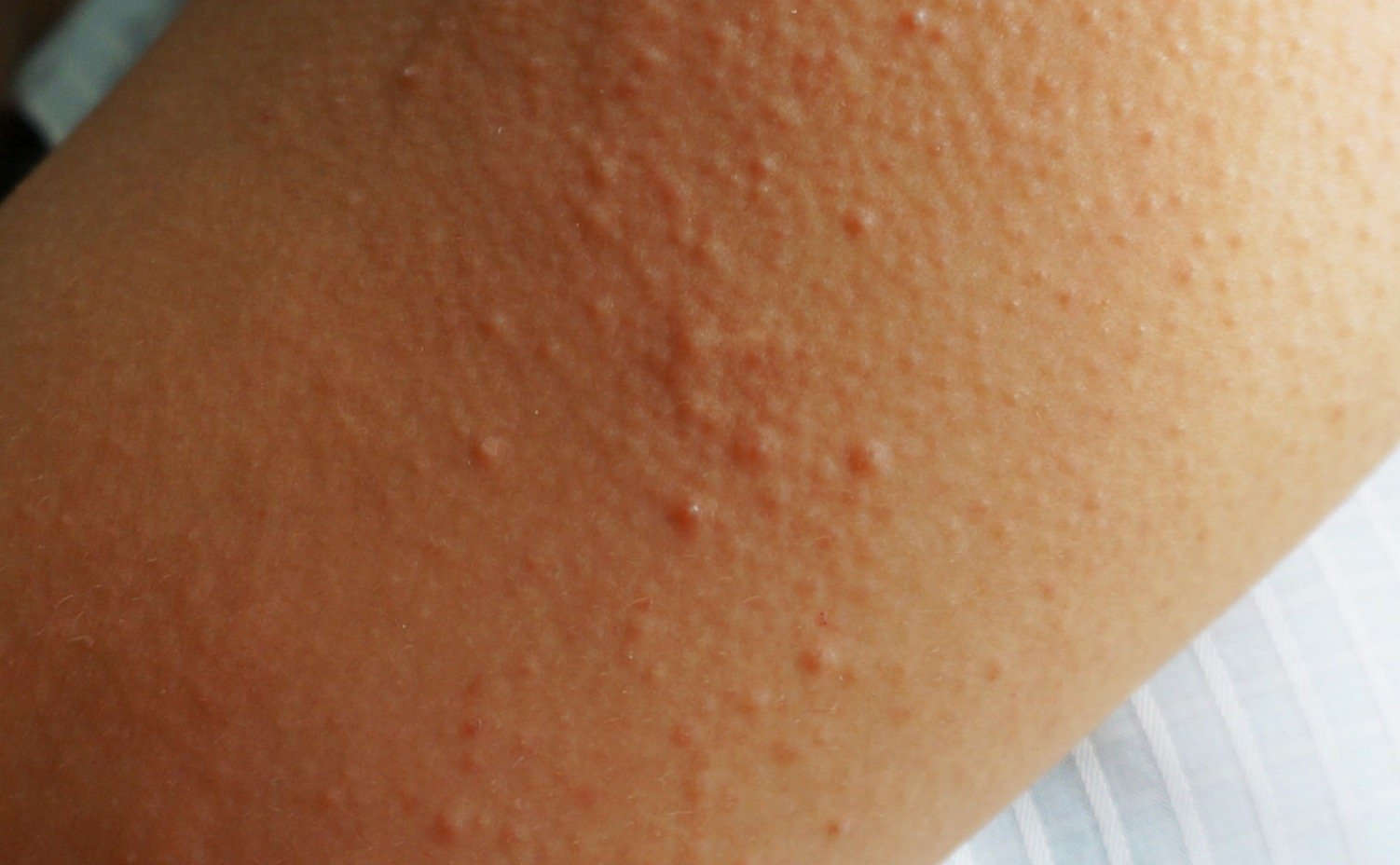Keratosis pilaris (chicken skin)
Why do I have keratosis pilaris?
You likely got it from one of your parents—keratosis pilaris (KP) is genetic.
KP (also called chicken skin or goosebump skin) happens when hair follicles get plugged with dead skin. This causes small, rough bumps, usually on the upper arms, thighs, bottom, and sometimes the cheeks.
The bumps can be skin-colored or a little red, making them more noticeable. They’re not harmful, but they can be annoying or make the skin feel rough.
How do I fix keratosis pilaris?
To treat KP, you need the right acid-based moisturizer—specifically urea cream.
1. Use urea cream
At bedtime, apply 10% or 20% urea cream to the bumpy areas.
Urea is a mild acid that helps unplug the dead skin.
Important: If the skin is broken, urea may sting. Let it heal with Vaseline first.
2. Speed up results
Apply urea cream morning and night
At bedtime, wrap the area in plastic wrap after applying the cream
3. Calm redness
If the bumps are red, use 1% hydrocortisone cream twice a day until the redness fades.
How long does it take to fix keratosis pilaris?
It takes about 3–4 weeks to smooth out the bumps.
Red or dark marks may take 1–3 more months to fade.
Most people stop using treatment once the bumps improve—but KP is genetic, so the bumps usually come back if you stop.
Good news: You can switch to 10% urea cream once your skin is smooth. It’s cheaper and works well to keep the bumps away.
👉 Just apply it every night before bed—right after brushing your teeth.
What if my keratosis pilaris isn’t getting better?
Most people see results with the steps above. But if your KP is stubborn, try one of these:
Switch to 40% urea cream (stronger exfoliation)
Add adapalene at bedtime before the urea cream to help your skin grow more evenly
If over-the-counter treatments still aren’t working, a prescription version of adapalene (called tretinoin) may help—but most people don’t need it.
Look for a board-certified dermatologist in your area. If you’re in or near Utah, see one of my excellent colleagues at the University of Utah or book a virtual visit with me through Honeydew.
DISCLAIMER
The statements expressed and content of this website are not intended to be a substitute for professional medical advice. Readers should seek their own professional counsel for any medical condition or before starting or altering any treatment, exercise, or dietary plan. Please see our full disclaimer here.

